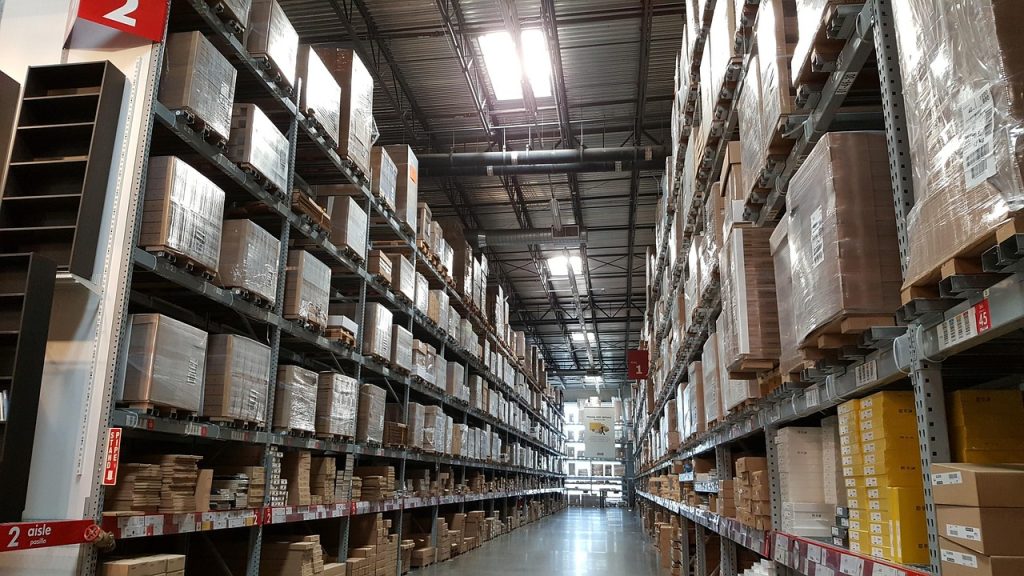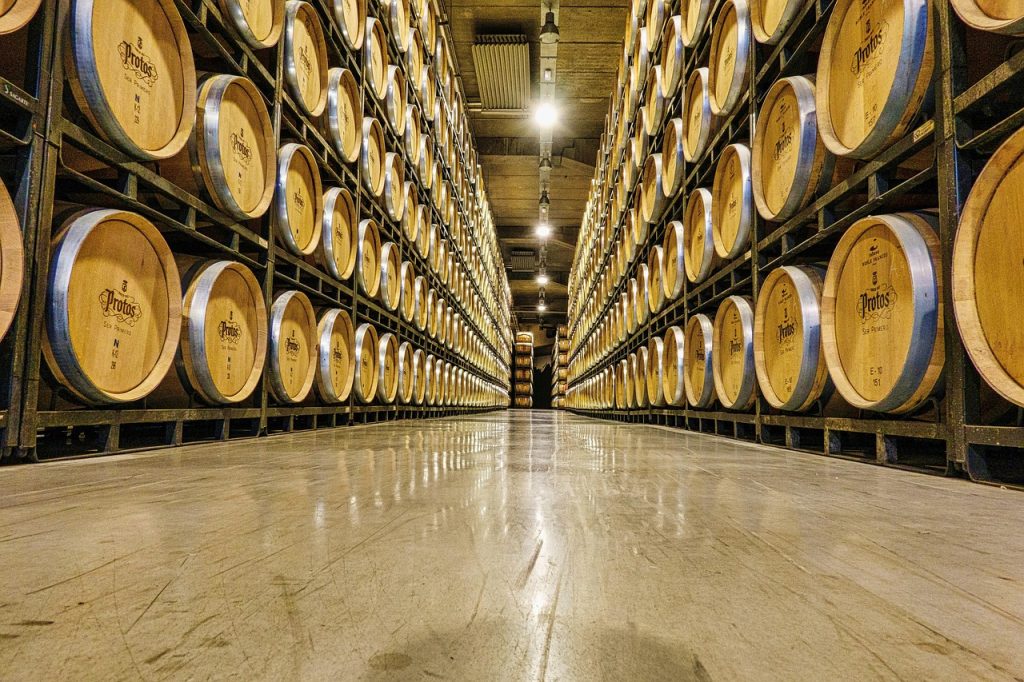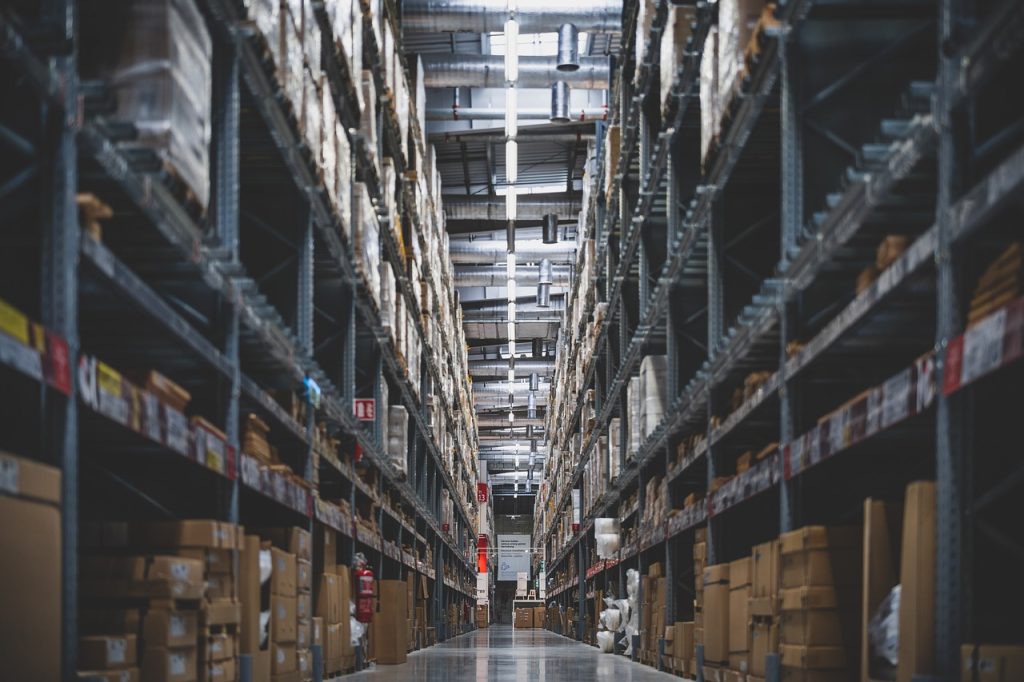Warehouses Intelligent Lighting Solutions
I. Characteristics of Warehouse Buildings

As a composite service industry integrating transportation, warehousing, freight forwarding, and information services, modern logistics is a product of economic globalization and an important service industry promoting economic globalization. Warehousing, as a core component and important pillar of logistics enterprises, plays a crucial role in the logistics system. In recent years, the total output value of the warehousing industry has grown continuously at a rate exceeding that of the national GDP, and the average growth rate of cargo throughput has reached nearly 20%. The warehousing business is showing a rapid development trend.
Against the backdrop of the unprecedented prosperity of the logistics industry, global logistics giants have begun to establish highly automated, multi-functional and high-density modern logistics hub centers around the world to enhance logistics operation efficiency. This has directly driven the annual market demand for warehouse lighting to grow by 20%. The requirements for lighting functions in warehouse lighting have also been elevated from the most basic “having lights” to a high-quality, high-efficiency and energy-saving level. Efficient LED lighting systems not only improve the efficiency of logistics operations but also play a crucial role in reducing failure rates, ensuring operational safety and lowering enterprise operating costs.
According to the height of the warehouse building, the installation status of the lamps can generally be divided into three types: low ceiling, medium ceiling and high ceiling. Low ceilings are generally less than 5 meters in height; medium ceilings are typically installed at a height of 5 to 10 meters; high ceilings are installed at a height of over 10 meters and require lamps with a power of 300W or more.
II. Characteristics of Warehouse Lighting

Today, with global energy increasingly tight, energy conservation in industrial lighting systems is an inevitable trend. High-quality industrial lighting not only can well meet the extreme environments of industrial production and reduce energy consumption, but also a more comfortable visual environment helps employees significantly relieve fatigue from long working hours, maintain a good working state, thereby improving production efficiency, reducing work error rates, increasing the pass rate, and lowering the incidence of production safety accidents, ultimately enhancing the efficiency of enterprise value.
For lighting, appropriate illuminance should be selected based on visual requirements, the nature of the work and environmental conditions, and proper brightness distribution and uniformity of lighting should be adopted to minimize unnecessary shadows and ensure a clear visual space; the correct selection of light sources and lamps should be made to limit glare and enhance the safety of work and activities under lighting; there should be no flicker to reduce irritability and unease; the selection of light sources should be reasonable to minimize the adverse effects of light heat and ultraviolet radiation on people and objects; the choice of light color and color rendering index should be handled well to make them harmonious and create a favorable color discrimination environment for work and life, thereby creating a light environment that makes people feel relaxed, comfortable and beautiful when working and living.
When replacing light sources, environmental protection and energy conservation requirements should be considered; at the same time, light sources with the longest possible lifespan should be selected to reduce the manpower and material resources for lamp replacement; visual conditions should be improved to make people feel relaxed and happy under lighting and reduce light pollution.
III. Precautions for Warehouse Lighting one
1.To meet the requirements of night work
Not only at night, but also for many visual tasks that are carried out indoors, artificial lighting is needed even during the day. The lighting effect cannot fully match natural lighting. If the lighting level is insufficient and the visual characteristics are inadequate, the error rate of operations will increase or the speed will decrease. Even if higher illuminance lighting is used to ensure better visual characteristics, in terms of the visual effect of lighting, the lighting standards and the actual needs of the site should be followed through reasonable lighting calculations to arrange the lamps, so as to ensure a certain lighting level and reduce the decline in work efficiency caused by insufficient lighting. In relatively dim environments, light sources with a certain color rendering index should be used to improve the effective luminous efficiency.
2. Meeting the brightness requirements while providing a visually comfortable experience
The influence of the warehouse ceiling and walls on the lighting effect is related to the room area. In small rooms, the ceiling occupies a small proportion of the field of view and has a small impact on illuminance, while the walls occupy a large proportion of the field of view and have a significant impact on illuminance. Therefore, in small rooms, high-reflectance walls and low-reflectance ceilings can be used. Conversely, in large rooms, high-reflectance ceilings and low-reflectance walls should be used. Through effective lighting arrangement, a moderate and balanced illuminance can be achieved. The lighting requirements are bright and clear, without glare or double images.
The illuminance requirements for warehouses are as follows:
Traditional sodium lamps require preheating to start. If the power is interrupted during operation, they need to cool down and preheat before they can be restarted. Sodium lamps have large current harmonics and emit a harsh current sound. The surface temperature of the bulb can reach 360°C, making the environment feel significantly warmer under sodium lamps. They have low color rendering, causing color deviation and poor visual effects under the light. The stroboscopic effect is severe, making it difficult to directly observe small objects with the naked eye, and the light is dazzling and the environment feels oppressive. Clearly, it is impossible to work comfortably under sodium lamp lighting, which reduces work efficiency.
3. Meeting the requirements of energy conservation, reduced consumption, and low-carbon environmental protection
It is well known that energy consumption is mainly concentrated in the industrial sector. Reducing industrial energy consumption, which is the “big head” of energy consumption, is the top priority in energy conservation and consumption reduction efforts. Vigorously promoting and applying energy-saving lighting products is an inevitable trend.
Energy shortages have brought a huge impact on the manufacturing industry, which is known for its high energy consumption. For manufacturing enterprises, taking the energy-saving path is an inevitable trend. Enterprises have more than 20% energy-saving potential. Due to the lack of funds for energy-saving renovations and energy-saving consulting services, the heavy energy consumption costs have significantly increased the costs of enterprises. This not only makes the power supply tight but also pollutes our living environment.
Take traditional sodium lamps as an example. Traditional lamps have the disadvantages of low luminous efficiency, insufficient illuminance, poor safety, high energy consumption, low color rendering, inability to start when the voltage is unstable, frequent replacement, heavy workload, and high heat generation.
IV. Lighting Fixtures for Warehouses
Depending on the height of the warehouse building, it is recommended to install LED industrial lights for low ceilings; for medium and high ceilings, LED tunnel ceiling lights with a power of 340W are suggested.
The high-power LED fixtures use high-brightness original CREE LEDs from the United States, with an efficiency of up to 185-190lm/W. Compared with traditional metal halide lamps and high-pressure sodium lamps, they have obvious advantages, with an energy-saving rate of over 75%, a lifespan almost ten times that of traditional lamps, and no light pollution. They can provide sufficient and uniform lighting for industrial lighting places such as warehouses, workshops, and factories. They can offer a good and comfortable lighting environment for people engaged in long-term visual work and can appropriately relieve the visual fatigue of operators.
The high-power LED fixtures have a special surface treatment process, which makes them aesthetically pleasing and have excellent heat dissipation and anti-corrosion functions. They are easy to install and disassemble, and have a wide range of applications. The unique light distribution technology ensures uniform light spots. They have good color rendering, close to natural light, and present the true colors of objects more accurately. Various light colors are available to meet the needs of different environments, eliminating the oppressive emotions caused by the high or low color temperature of traditional lamps, making the visual experience more comfortable and improving the work efficiency of workers.
In addition, the high-power LED fixtures use constant current and constant voltage control, with a wide applicable voltage range (AC100V-240V), overcoming the grid and noise pollution and unstable lighting caused by ballasts. They have no flicker or noise, no stroboscopic hazard, and allow for clear and true observation of small objects with the naked eye. The lighting environment is bright and comfortable, avoiding the irritation and fatigue to the eyes during work. They strive to provide the best LED lighting source for warehouse and work lighting.
V. Intelligent Lighting System

Intelligent lighting systems represent the next evolutionary stage of warehouse lighting, leveraging the power of the Internet of Things to create smart and adaptable lighting solutions. These systems enable remote control, real-time adjustments, and automatic responses to environmental changes, revolutionizing the way warehouses manage their lighting needs and significantly enhancing operational efficiency.
By integrating intelligent lighting systems, warehouses can achieve unparalleled control over their energy consumption. These systems optimize energy usage by adjusting lighting based on occupancy, the availability of natural light, and specific operational requirements, thereby reducing unnecessary energy consumption and significantly lowering operating costs.
The combination of automatic lighting switch timing control and dimming functionality further enhances the efficiency of intelligent lighting systems. These features allow for precise control over light intensity and duration, ensuring that lighting is used only when and where it is needed, further saving energy and extending the lifespan of lighting equipment.
Efficient lighting plays a crucial role in reducing maintenance costs and improving warehouse operational efficiency. By adopting advanced lighting solutions, warehouses can reduce the need for frequent replacements and repairs, achieving long-term cost savings and increased reliability.
Amasly offers a comprehensive range of innovative lighting solutions specifically designed for warehouse needs. From LED lighting to intelligent lighting systems, our products are aimed at enhancing efficiency, reducing maintenance costs, and improving overall warehouse operations. Explore our lighting solutions to optimize your warehouse lighting layout.







